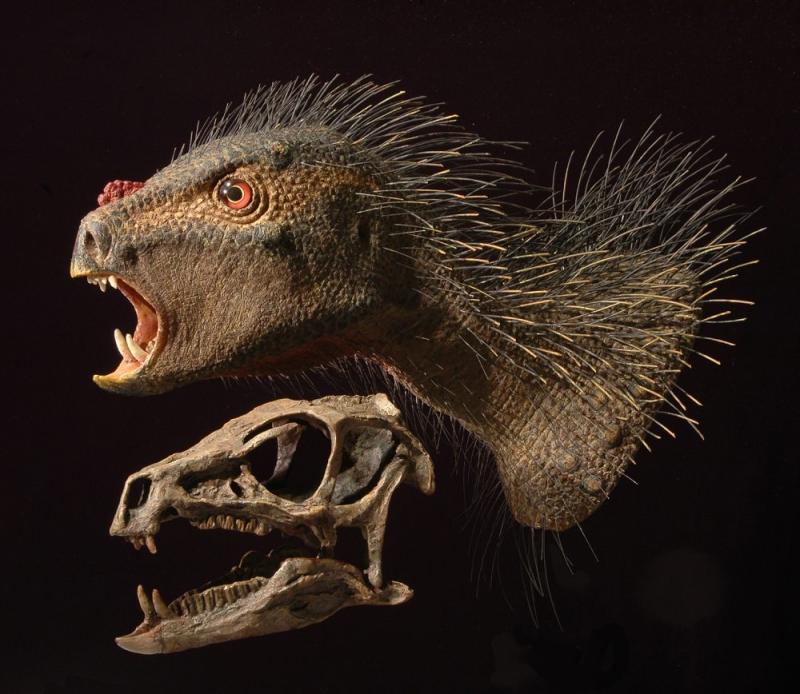Please note: The Academy will close at 3 pm today for Big Bang Gala.
Science News
Tiny Dino That Nips
October 3, 2012

“It would be a nice pet—if you could train it not to nip you.” That’s a quote from Paul Sereno, a paleontologist at the University of Chicago and National Geographic Explorer-in-Residence, in today’s National Geographic News. He’s describing his publication in ZooKeys on Pegomastax africanus, a small dinosaur that lived about 200 million years ago.
Pegomastax was a heterodontosaur, a genus of herbivores that lived when the supercontinent Pangaea had just begun to split into northern and southern landmasses. The single specimen of the new species was originally chipped out of red rock in southern Africa in the 1960s and discovered in a collection of fossils at Harvard University by Sereno decades ago, but only described now. (In an article in the New York Times, he describes how apologetic he is for not getting to it sooner.)
It’s name means “thick jaw from Africa,” which describes the cat-sized species well. Pegomastax had a short parrot-shaped beak up front, a pair of stabbing canines, and tall teeth tucked behind for slicing plants. The tall teeth in upper and lower jaws operated like self-sharpening scissors, with shearing wear facets that slid past one another when the jaws closed. The parrot-shaped skull, less than three inches long, may have been adapted to plucking fruit.
The canine teeth in heterodontosaurs often lead scientists to believe that these small dinosaurs ate meat or at least insects, but Sereno says they were more likely used in self-defense and competitive sparring for mates.
Another bizarre feature of Pegomastax are the porcupine-like bristles that likely covered its entire body. Sereno imagines these heterodontosaurs scampering around in search of suitable plants, looking something like a “nimble two-legged porcupine.”
A nimble two-legged porcupine that nips? As a pet? No, thanks.
Image: Tyler Keillor